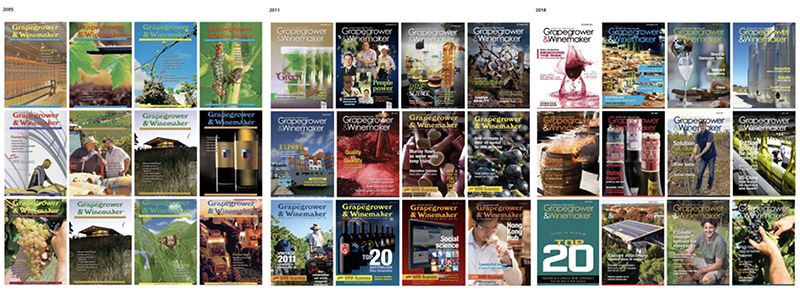In an article from the August Grapegrower & Winemaker magazine, a Victorian wine producer has proposed an unorthodox way of meeting demand from overseas-based consumers by potentially using the services of international freight couriers to send small shipments directly from wineries and cellar doors.
Ken Eckersley owns and operates Nicholson River Winery in the East Gippsland region.
He says his is the oldest operating winery in Victoria east of Melbourne, but he believes it’s time for the industry as a whole to now embrace new delivery methods in the growing world of e-commerce.
Eckersley’s says his idea came about through his own experiences. “For a small winery we would see a fair amount of overseas tourists,” he explained. “We’re just off the highway in eastern Victoria. Twelve to 13 per cent of our visitors here are actually from overseas; they come in and they may buy a bottle.”
The limitation is that international visitors usually aren’t able to purchase and carry more than a bottle or two.
“They say ‘we’ll take one bottle for a friend’ or something like that; ‘we can’t take more because were on the road’,” said Eckersley. “I will say, if you could buy a carton of wine, would you? And they say, ‘oh, yeah’.”
And with more sales for overseas customers now also happening via the internet, Eckersley says one viable solution could be for groupings of smaller producers to negotiate a group rate with international carriers — something similar to what he says already happens domestically.
“It’s basically a discounted group rate. All the wineries here all get billed separately by Australia Post and it works out fine.”

Ken Eckersley
With import regulations and restrictions in place for most international destinations, Eckersley does admit that having a similar working system for overseas deliveries could be more complicated than shipping locally.
But he says it’s an option that should be examined by the wider industry. “Potentially because we’ve got a couple of thousand smaller wineries in Australia […] and we only need them to send a couple of cartons a month, but this would all add up.
“We are the image of the industry. Tourism Australia promotes this overseas and foreign tourists want to come and visit cellar doors and walk among the vines and so on; all these romantic images, of course, work.”
But he said small winemakers don’t make enough by selling a single bottle of wine to a tourist.
“It costs you money actually because it takes up so much time. Where we do make money is if we sell a six pack or a 12-pack to a foreign tourist. A direct sale like that makes it worth your while.
“There are all these potential customers that you could say, ‘look, by the time you pay the tax and freight it could be 100 dollars, you could send a six pack back and it’ll be back in Hong Kong or wherever waiting. It’ll be there in four days’.”
But he says current options for sending international shipments make any such transaction too expensive for a small operator to utilise.
“We’d love to sell foreign tourists more than a bottle or two and they’d love to buy more, but the [delivery] system that’s in place won’t allow it.”
Eckersley said his concept could also facilitate repeat orders from overseas.
“Some visitors contact you down the track in six or 12 months to say they’ve run out of the bottles they bought, can they but some more?”
He says using global couriers could be the best way to achieve more cost-effective shipping rates.
“It’s pretty much a low cost exercise; once you set it up and solve any issues, it’s self-maintaining.
“This is the modern thing. Suddenly it could be possible for us to land some unique Australian wines on foreign tables at a price that’s competitive.
“There are 2200 small wineries in Australia and I think the most interesting wines in Australia are being made by little companies in little places.
“We need this psychological boost for smaller wineries,” Eckersley said.
This article was originally published in the August 2019 issue of Grapegrower & Winemaker magazine.
When you subscribe, you get:
Your choice of print copy subscription or digital-only subscription!
Both types of subscription include:
Digital access to all Grapegrower & Winemaker issues since 2005
Access to download PDF versions of full magazines and single articles
Subscribe today
To preview the latest magazine, click here.
To subscribe, click here.






















